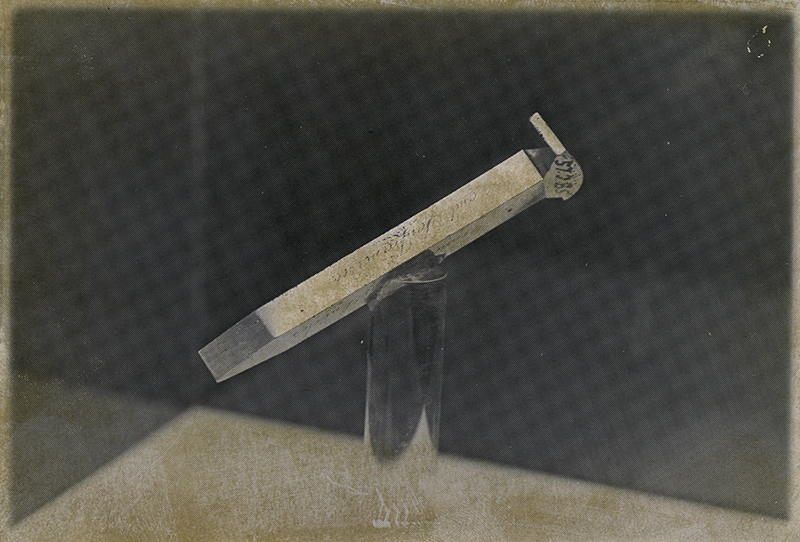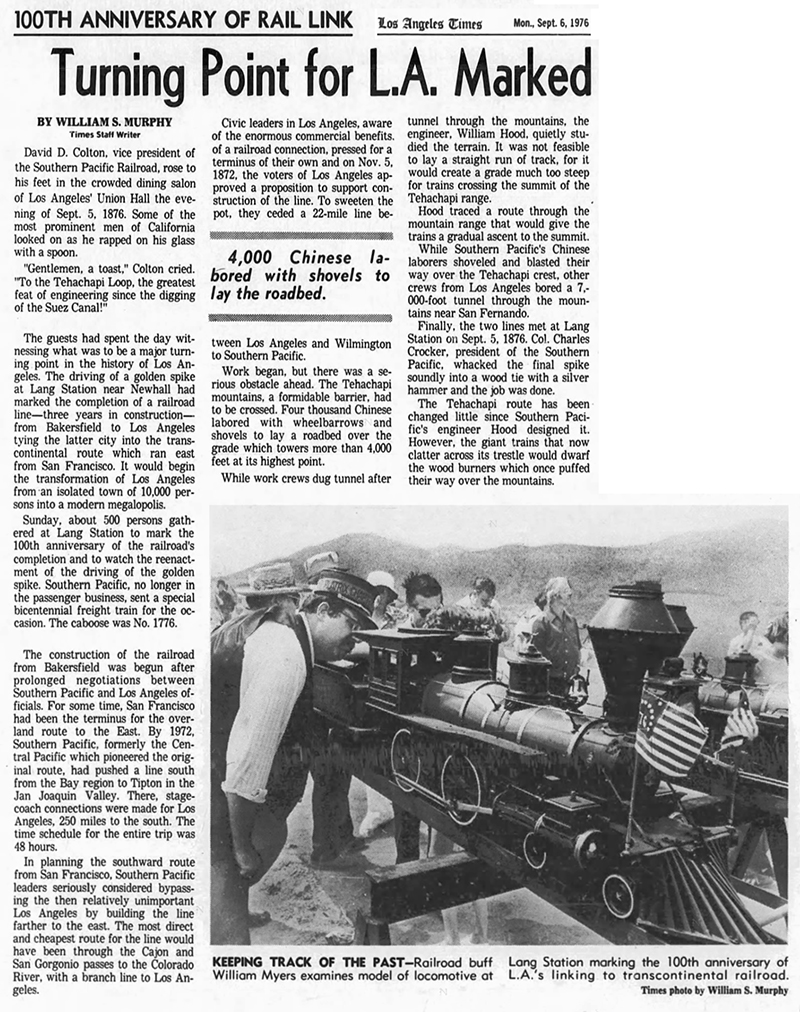|
|

|
September 5, 1976 — Members of the Chinese Historical Society of Southern California and the nine-month-old Santa Clarita Valley Historical Society, along with Southern Pacific Railroad representatives, the Canyon High School band and local history buffs, celebrate the 100th anniversary of the driving of the "Last Spike," aka golden spike, at the site of Lang Station — which was declared a California State Historic Landmark in 1957 and torn down in 1971.
A century earlier, the last spike marked the completion of the railroad that linked Los Angeles with the rest of the nation. The Central Pacific rails, coming down from the north, and the Southern Pacific rails, coming up from the south, met in present-day Canyon Country. March Fong Eu, California's Chinese-American secretary of state, and CHSSC President Stanley Lau were the featured speakers at the centennial event. Robert Banning, grandson of early Los Angeles freighter Phineas Banning, whose coaches passed through Lang when it was a stage station on the road to the Cerro Gordo silver mines in the early 1870s, channeled Charles Crocker as he drove a replica golden spike into a railroad tie. Meanhile, the real golden spike stood nearby in a Plexiglas case, brought down for the occasion from its usual home at the California Historical Society museum in San Francisco. It's believed Crocker personally removed and pocketed the spike after driving it in 1876; it remained it the Crocker family until it showed up one day in 1956 at the California Historical Society office. The 1976 event included the placement of these two plaques. March Fong Eu would reprise her appearance at the Golden Spike Quasquicentennial celebration (125th anniversary) in 2001. Photos by Tom Mason / SCV Historical Society. Further reading: 1876 Lang Station Golden Spike 50th Anniversary Reenactment (1926) Golden Spike Centennial Program (1976) Eu's Remarks at the 125th Anniversary Event (2001)
TO7601: Download original images here. SCV Historical Society collection.
|
The site owner makes no assertions as to ownership of any original copyrights to digitized images. However, these images are intended for Personal or Research use only. Any other kind of use, including but not limited to commercial or scholarly publication in any medium or format, public exhibition, or use online or in a web site, may be subject to additional restrictions including but not limited to the copyrights held by parties other than the site owner. USERS ARE SOLELY RESPONSIBLE for determining the existence of such rights and for obtaining any permissions and/or paying associated fees necessary for the proposed use.









